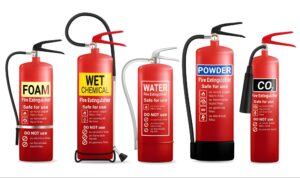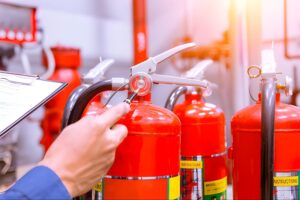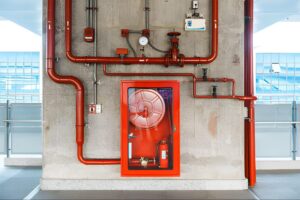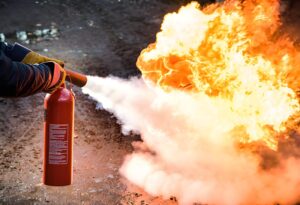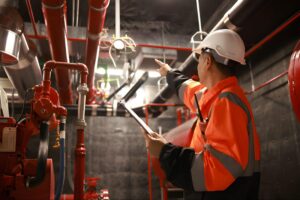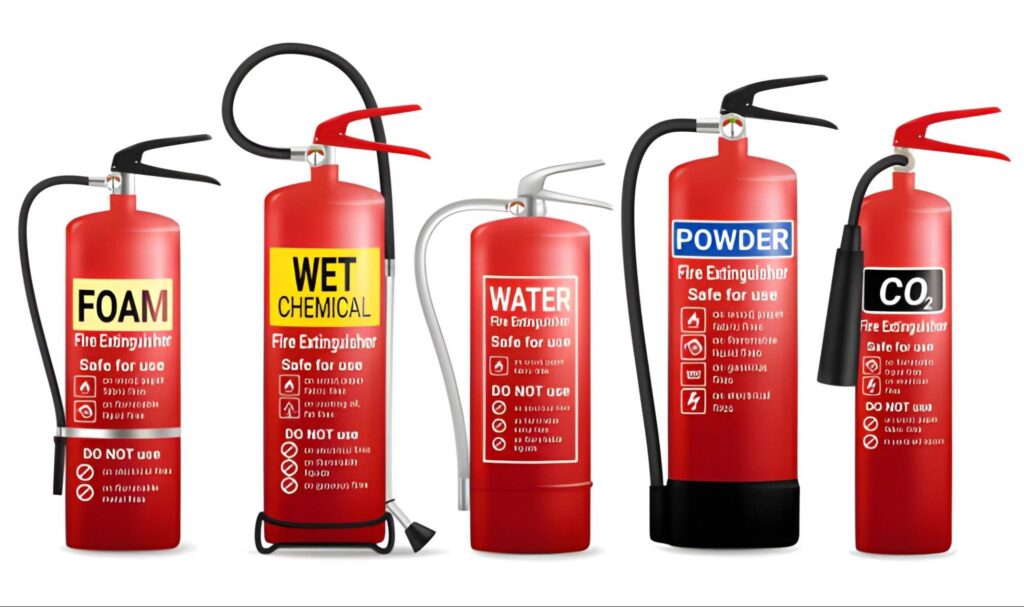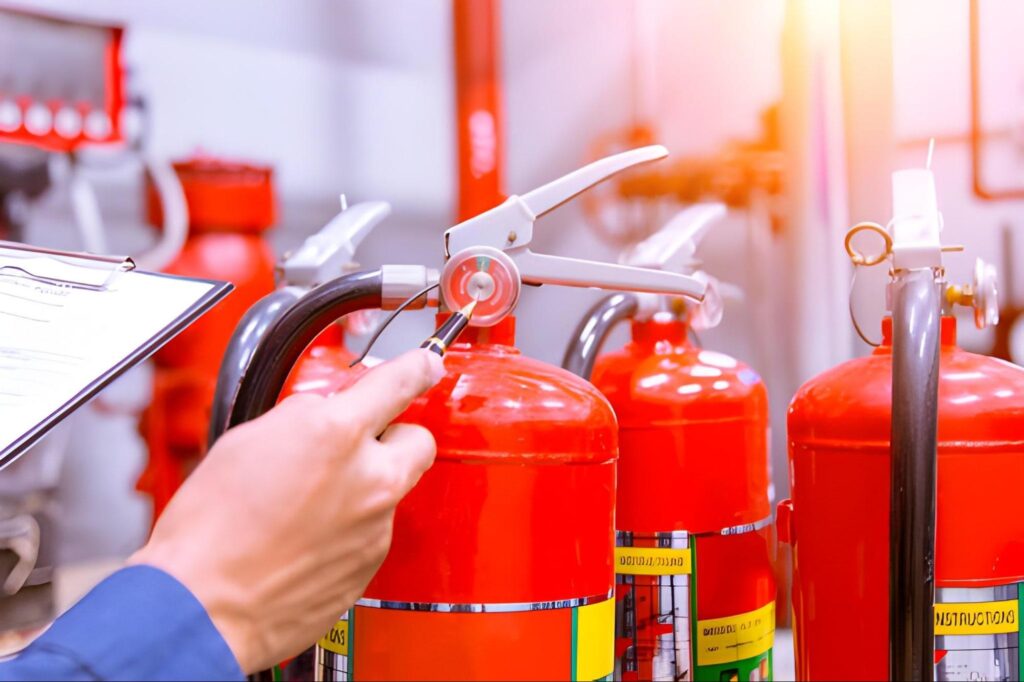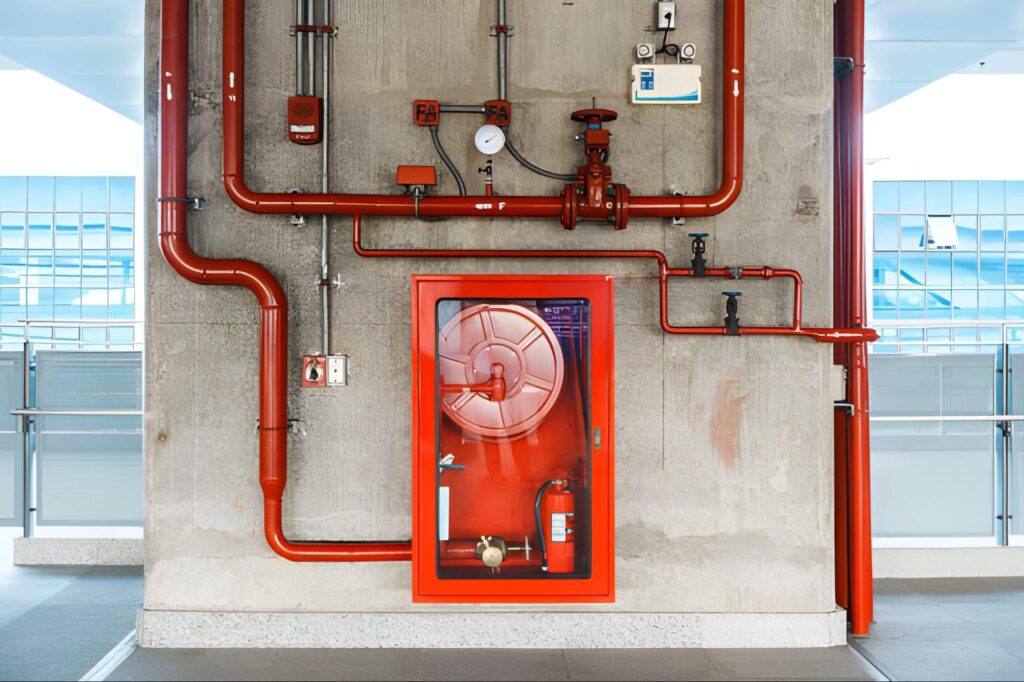In a fire emergency, every second counts, and a functioning fire extinguisher can make the difference between a minor incident and a major loss. However too often, extinguishers sit unnoticed in corners or mounted on walls, only to fail when they’re needed most due to neglect. This is why they must be routinely maintained to ensure they are always ready to control a fire before it spreads.
1. Ensures Functionality
Fire extinguishers must be routinely maintained to remain fully functional in the event of an emergency. By checking for pressure loss, corrosion, or physical damage, technicians can prevent failures that could render an extinguisher useless at a critical moment.
2. Keeps Them Accessible
In addition to functionality, routine checks ensure extinguishers are always accessible. Maintenance includes verifying proper placement, confirming that units are not obstructed by furniture or equipment, and ensuring they haven’t been tampered with. This guarantees quick and easy access during a fire emergency.
3. Compliance with the Law
Another important reason for regular upkeep is compliance with fire safety regulations. Regulations require periodic inspections and servicing of extinguishers. Staying compliant helps avoid legal penalties and demonstrates your commitment to maintaining a safe environment.
4. Extends Lifespan
Routine maintenance also helps extend the lifespan of fire extinguishers. By identifying and addressing minor issues such as leaks, worn seals, or corrosion early, owners can prevent these problems from escalating, thereby delaying the need for costly replacements.
5. Saves Money
Closely linked to longevity, regular servicing reduces long-term costs, especially in large facilities with multiple units. Preventive maintenance avoids expensive emergency replacements and ensures that all extinguishers continue to perform reliably without frequent replacements.
6. Identifies Hidden Issues
Many potential problems with fire extinguishers are not visible to the untrained eye. Routine inspections help detect clogs, leaks, or hidden damage before they compromise performance, ensuring that each unit is ready to respond in a fire situation.
7. Protects People and Property
A properly maintained extinguisher gives confidence to occupants, enhances workplace safety, and significantly reduces the risk of injuries and property loss during fire incidents.
How Often Should Fire Extinguishers be Maintained?
Routine maintenance of fire extinguishers should follow a structured schedule, which includes:
- Monthly Checks: Conducting quick monthly inspections is essential to ensure that fire extinguishers remain in good working order.
- Annual Maintenance: The SCDF mandates annual maintenance of fire extinguishers to comply with Singapore Standard SS 578:2019.
- Every 5 Years: For extinguishers containing non-gas agents such as powder, foam, water, or wet chemical types, hydrostatic testing is required every 5 years.
- Every 12 Years: Dry chemical extinguishers, which use gas-type agents, require hydrostatic testing every 12 years.
What Does Routine Maintenance of Fire Extinguishers Involve?
Routine maintenance of fire extinguishers involves a combination of regular self-checks, professional inspections, testing, cleaning, and proper placement.
1. Monthly Self-Checks
The owner or occupant can carry out a monthly inspection to identify minor issues before they become serious problems.
Key aspects to check:
- Ensure the extinguisher is easily accessible and not blocked or hidden.
- Confirm that the operating instructions on the label are clearly visible and facing outward.
- Check that the extinguisher is full, either by weighing it or lifting to feel its weight.
- Identify any signs of physical damage, corrosion, leaks, or a clogged nozzle.
- Verify that the pressure gauge or indicator is within the recommended operational range.
2. Annual Professional Maintenance
Annual maintenance of fire extinguishers must be carried out by qualified technicians from SCDF-approved organizations using proper tools, materials, and manufacturer-recommended parts.
Besides the routine monthly checks, annual maintenance includes:
- Checking that the service label is present and noting the next maintenance date.
- Recharging or repairing the fire extinguisher as needed.
- Updating the maintenance tag to reflect the inspection date and any work performed.
- Recording the date of inspection and the initials of the person performing it.
3. Hydrostatic Testing
Extinguishers that exhibit signs of corrosion, physical damage, or other structural defects must undergo hydrostatic testing to verify their integrity and prevent potential failures during use. This testing helps maintain the safety and reliability of the extinguisher over its service life.
Consequences of Neglecting Fire Extinguisher Maintenance
Neglecting routine maintenance of fire extinguishers can have serious repercussions, ranging from safety hazards to legal and financial consequences.
1. Failure to Discharge
A fire extinguisher may fail to operate during an emergency due to issues like valve or seal failure. When this happens, the extinguisher cannot release its contents, leaving fires uncontrolled and posing serious risks to people and property.
2. Reduced Pressure or Leaks
Even if an extinguisher can discharge, leaks or pressure loss caused by deterioration can limit its effectiveness. Insufficient pressure reduces the reach and force of the extinguishing agent, making it difficult to contain a fire promptly.
3. Hidden Damage
Structural weaknesses such as corrosion, cracks, or internal defects may go unnoticed without routine inspections. These hidden issues can compromise the extinguisher’s reliability, potentially leading to failure when it is most needed.
4. Outdated Extinguishers
The chemicals inside fire extinguishers degrade over time, and parts may become obsolete. Using outdated extinguishers can be ineffective and dangerous.
5. Non-Compliance
In Singapore, the SCDF requires that all fire extinguishers undergo annual maintenance by qualified technicians to ensure safety and reliability.
Compliance includes:
- Adhering to the Singapore Standard SS 578:2019.
- Conducting servicing by SCDF-licensed companies.
- Maintaining proper records through service tags attached to each extinguisher.
Failure to meet these fire extinguisher maintenance requirements can lead to fines and legal liabilities.
How to Know When a Fire Extinguisher Should Be Replaced?
Regular checks can help determine when it’s time for a replacement. The indicators include:
Expiration Date
Check the label for an expiration date; if none is listed, use the manufacturing date instead. Most fire extinguishers have a lifespan of 10 years, and any extinguisher older than this should be replaced.
Pressure Gauge
Inspect the pressure gauge to ensure the needle is in the green zone, indicating proper pressure. If the needle falls in the red zone, the extinguisher may not function correctly and should be recharged or replaced.
Physical Damage
Examine the extinguisher for dents, rust, cracks, leaks, or other physical damage. Also, check the tamper seal; if it is broken or missing, the extinguisher may have been used or tampered with. Any of these issues means the extinguisher should be serviced or replaced.
Maintenance Records
Review the maintenance tag to see when the extinguisher was last inspected. If there is a long gap in the maintenance of the fire extinguisher, this indicates that replacement or immediate servicing is necessary.
Ensure Fire Safety Compliance in Singapore with Soteria
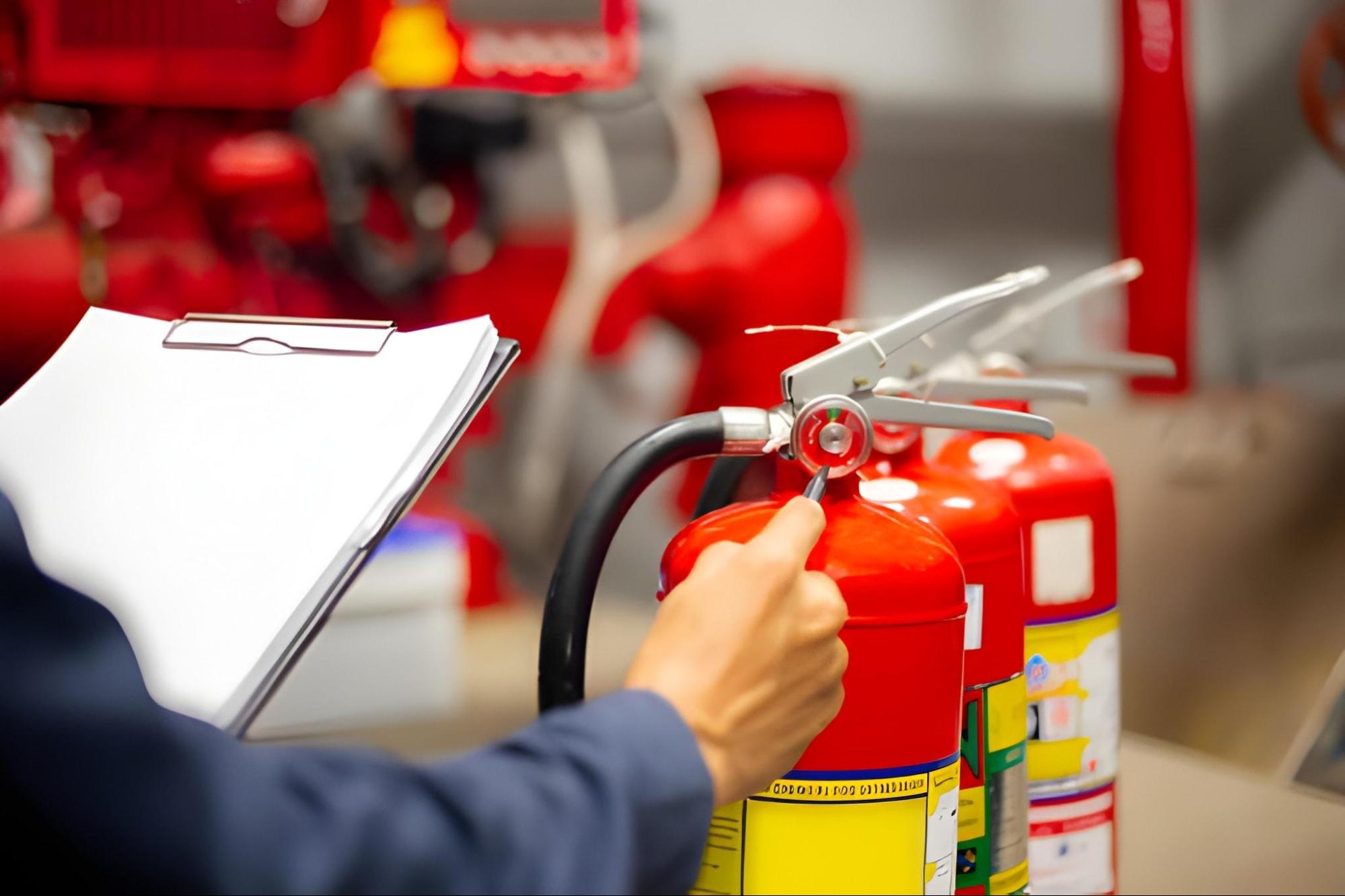
Routine maintenance of fire extinguishers is important, but it is not sufficient to meet fire safety standards or obtain a Fire Safety Certificate in Singapore. This is where Soteria plays an essential role.
As a fire and life safety consultant in Singapore we offer comprehensive services including meticulous pre-testing and inspection. Our qualified professional engineers conduct a rigorous, on-site audit of all critical fire safety systems within your premises, including fire alarm systems, sprinkler and riser systems, hose reels, fire extinguishers, and more.
Every system is carefully examined for functionality, placement, and compliance, ensuring your building meets all Fire Code requirements and is fully prepared to obtain a Fire Safety Certificate from the SCDF.
Engage our consultancy today and ensure your building’s safety and regulatory compliance.
